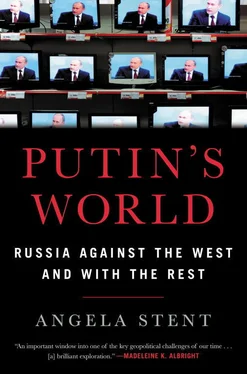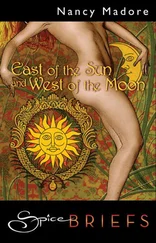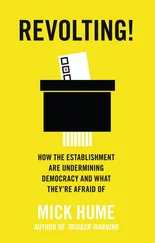SINO-RUSSIAN RELATIONS UNDER VLADIMIR PUTIN: A CAUTIOUS EMBRACE
THE LURE OF CHINA
The year 2001 represented a milestone in Russian-Chinese relations inasmuch as it produced an agreement codifying the strategic partnership. And the two leaders spoke the same language. The Chinese president Jiang Zemin had worked in the Stalin Automobile Works in Moscow in the 1950s, had passable Russian language skills, and could do a rousing rendition of a favorite Soviet song, “Moscow Nights” (“ Pod Moskovskie Vecheram ”). The Russian-Chinese Treaty of Good-Neighborliness and Friendly Cooperation is a twenty-year agreement laying out in broad brushstrokes the major elements of the relationship, including in the economic and military spheres. Since Vladimir Putin entered the Kremlin, he has consistently sought to maintain and improve ties with China. This is a result of Russia’s perceived need to offset its deteriorating relationship with the West but also of an appreciation of the advantages of allying oneself with a rising power who also happens to be a neighbor—and a large market with multiple sources of capital. Neither China nor Russia—both supporters of the concept of “absolute sovereignty”—is committed to an alliance that would limit its freedom of maneuver. A pragmatic partnership based on a shared interest in a multipolar world and maintaining authoritarian control at home is what both countries seek. Since the onset of the Ukraine crisis, Moscow has sought to intensify the relationship, but China retains its instrumental and clear-eyed view of its ties to Russia and will not take actions that might jeopardize its strong economic links with Europe and the United States. Nevertheless, the relationship has enabled Russia to avoid the international isolation the West has sought to impose after the Crimean annexation. Moscow can point to Beijing’s support for—or at least neutrality toward—actions the West has condemned. China is willing to validate Russia while the West criticizes it.
The Russia-China relationship has significant bilateral dimensions, including trade and energy, border regulation, (the border demarcation was completed between 2004 and 2008), and military-to-military cooperation. Both sides reject Western criticisms of their human rights records and support each other’s domestic policies. Russia supports the Chinese positions on Taiwan and Tibet. The relationship also has an important multilateral agenda, including regulation of relations in Central Asia via the Shanghai Cooperation Organization and coordination at the United Nations Security Council over issues such as Iran, Syria, and North Korea. Strikingly, there are no major international issues on which Russia and China disagree, unlike Russia’s vexed relationship with the West. For their first foreign trips as president, both current Chinese president Xi and his predecessor Hu Jintao (2002–2012) chose Moscow. Putin visited China early on in his first presidency. 33He likewise went to China soon after his 2012 reelection, 34after cancelling a planned trip to Washington for the G-8 summit a month earlier, saying he was “too busy.” 35
The bilateral and multilateral agenda has greatly expanded under Putin. Nevertheless, the relative asymmetry between the “elder” and “younger” brother has noticeably grown over the past fifteen years. China’s GDP is $14 trillion, whereas Russia’s is $1.28 trillion. Russia has a population of 142 million, China has a population of 1.3 billion. China is a dynamic, rising power, its economy projected to overtake that of the United States by 2030. Russia is not a rising power. Its economy is in decline, as is its population, particularly in the Far East region bordering China. Russia exports hydrocarbons and military hardware to China in return for imports of Chinese manufactures, including electronic goods. Unless Russia modernizes its economy, it will remain a raw materials and weapons supplier for China’s advanced industrial economy.
THE NEW “YELLOW PERIL”?
The danger of hordes from the East invading Russia and subjugating its population is a centuries-old trope in the Russian historical narrative. Genghis Khan and his twelfth-century marauders imposed the Mongol yoke that oppressed the Russian people for centuries, so the story goes. Fast-forward to the 1800s, and Chinese immigrants into the Russian Far East led to the first Russian warnings about the “yellow peril.” Tensions between the local Russian population and Chinese workers ebbed and flowed. In 1900, in retaliation for a Chinese attack on a Russian outpost, Russians in the border town of Blagoveshchensk drove all 3,000 Chinese then living in the city into the Amur River, where most of them drowned. 36
A 1911 pamphlet summed up Russian fears about the Chinese:
It is well-known that the yellow peoples nourish an organic hatred towards Europeans, and to us Russians in particular…. They dream… of conquering the world…. Invasion by the yellow races of the rich region of Siberia has already begun. 37
When the Sino-Russian border opened up after the Soviet collapse, new fears about a twenty-first century “yellow peril” reemerged as Chinese migrant laborers flocked to the Russian Far East. There are 6.3 million Russians in the areas bordering China, facing 109 million Chinese on the other side of the border. 38Opinion polls show that the Russian population in the Primorsky Krai border region fear Chinese laborers less than they did ten years ago, but a sizeable number believe that border clashes similar to those in 1969 are still possible. They remain suspicious of the Chinese, who often dominate local commerce. They also are wary of China’s designs on their land. 39
Indeed, a 2015 Russian government proposal to lease 1,000 square kilometers of land to the Chinese was abandoned after the local population and their leaders objected. 40The contrast between the Chinese side of the border (with large, modern hotels and urban infrastructure) and the Russian side (with sparse and often dilapidated buildings) is striking. In 2007, both countries agreed to build a rail bridge across the Amur River, to be a symbol of their friendship. The Chinese have built their section of the bridge. The Russians only began construction in 2016. 41
TRADE AND ENERGY
Since 2009, China has been Russia’s largest trading partner. But their bilateral trade is less than one-tenth the size of US-China trade. For all the lofty words about how good the relationship is, in fact the economic relationship is comparatively modest. China is a much more important trade partner for Russia than vice versa. Before the Ukraine crisis and Russia’s subsequent economic difficulties due to falling oil prices and Western sanctions, bilateral trade amounted to $88 billion. It fell by 25 percent in 2015, and recovered to its previous level by 2018. The structure of trade largely resembles that between a developing and a developed country. Mineral products and hydrocarbons make up 73 percent of Russian exports. Machinery and transport equipment constitute 52 percent of Chinese exports, with textiles and footwear at 15 percent. 42One exception is advanced weaponry. China is the second largest buyer of Russian military hardware. Russia was initially careful not to sell China its most sophisticated arms, because China has a habit of reverse engineering Russian military hardware and selling it on the world market. But in 2015, as part of the post-Crimea intensification of ties, Russia agreed—in a $3 billion deal—to sell China Su-35S fighter jets and S-400 surface-to-air missiles, which will upgrade China’s missile defense capabilities and could jeopardize Taiwan’s aerial defenses. 43The deliveries began in 2018.
As China has modernized and become much richer, its demand for energy has grown exponentially. Russia has plentiful oil and gas reserves, but most of its energy exports went to Europe in the Soviet era. Since the Soviet collapse, Russia has worked on diversifying its energy exports, although energy relations with China have proven quite challenging, due to the vagaries of Russian politics and tough Chinese negotiating. The project of building the Eastern Siberia–Pacific Ocean oil pipeline (ESPO) took over a decade and went through many permutations. For a time, it looked as if the first Russian oil pipeline to Asia would go via Japan, but eventually the Chinese route prevailed. Russia began its deliveries of crude oil to China in 2011, part of a bilateral “loans for oil” deal whereby Beijing provided Moscow with a $25 billion loan in exchange for oil deliveries until 2030. 44
Читать дальше












